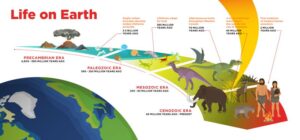Is the “end” near? If the pop-culture version of the Mayan calendar’s “apocalyptic” predictions turns out to be correct and the world ends on 12/21/12, then you will probably not be reading this blog. The fiscal “cliff” sounds dire, but luckily it is only an annoying metaphor. This latest round of end-of-the-world hysteria is part of an ongoing theme in American culture that includes the 20th century fears of Cold War nuclear Armageddon, the “Y2K” mania leading up to December 31, 1999, Dick Cheney’s obsession in the early 2000s of terrorists with suitcase nukes, and the constant stream of movies and television shows portraying the sudden dramatic end of civilization.
Americans consciously or subconsciously understand that the world as we know it could alter in an instant, and such TV shows provide cathartic relief to that tension. Notable among cable television’s recent boom in “end times” programming is National Geographic Channel’s “Doomsday Preppers.” The show profiles individuals and families as they build bunkers and compounds, can dry goods, and purchase paramilitary vehicles that can serve as mobile homes in which to survive amidst the teeming post-apocalyptic masses. Each “prepper” has their threat of choice, ranging from earthquakes, tidal waves, droughts, and food shortages, to super-volcanoes, nuclear holocaust, viruses, terrorists, and more. The show takes all apocalyptic scenarios seriously and provides an expert to evaluate the prepper’s actions and suggest improvements and additional preparations they can make in the basic categories of water, food, shelter, and security.
To audiences concerned with sustainability and climate change, the show sends mixed messages. On the one hand, most preppers demonstrate an admirable understanding of where their food and water come from, the motivation to design resilient systems, and display actions consistent with basic emergency preparedness. On the other hand, the show tends to highlight the “lifeboat strategy” of saving one’s self, family, and perhaps a few friends, while allowing the rest of society to crash and burn, with an emphasis on guns instead of, say, community gardens.
Preppers often proudly declare their willingness (or even a disconcerting glee) at the firepower they will aim at the unfortunate stragglers who trespass near their fortified bunker in search of provisions. Presumably in the post-Apocalypse, life will have reverted back to Hobbes’ depiction as nasty brutish and short, with every (gun-toting) man for himself. In a lawless world of constrained resources where conscientious preppers are now the 1 percent (in terms of food, water, and shelter), the new 99 percent, including former neighbors, will be gunned down with impunity, like zombies in a Resident Evil movie or video game.
The sustainability advocates’ answer to doomsday prepping is the Transition movement, which provides lifeboat-type strategies to communities hoping to “power down” their economies in advance of peak oil resource constraints of the “Limits to Growth“ variety.
The Transition movement stands in contrast with preppers because it promotes a community-wide approach, and looks to solutions such as economic localization, a steady state economy, and permaculture. Transition groups support projects such as community supported agriculture, shared transport, local currencies, seed swaps, tool libraries, energy saving clubs, urban orchards, and reskilling classes where people learn to make or repair what are currently referred to as “consumer products.” Though there are overlaps between Preppers and Transitioners such as composting their food, Transition folks are more likely to be gun-control advocates rather than looking forward to gunning down their hungry neighbors in the post-apocalypse.
The two distinct approaches to apocalypse planning may correspond with the red state/blue state analogy in American politics, it could be an urban versus rural cultural divide, or it could reflect the divergence between scientific and religious responses to extreme weather as seen in a recent survey by Public Religion Research Institute. In the survey 6 in 10 Americans stated they believe extreme weather events are related to climate change, but as CNN reported, “More than a third of Americans see recent extreme weather as a sign that the world is in biblical “end times,” and “Thirty-six percent of Americans say that the severity of recent natural disasters indicate that we are at the precipice of Jesus’ second coming and the end of the world…The survey found that 15 percent of Americans believe the world will end, as predicated in the book of Revelation, in their lifetime.”
This reveals a huge psychological chasm in America, if millions of people interpret an event like Hurricane Sandy as God’s retribution for New York legalizing gay marriage, while those following the climate science worry about rising parts per million CO2 in the atmosphere and methane measurements in the Siberian permafrost.
This brings us back to the coming Winter Solstice. What if flipping the page on the Mayan calendar is really just a wake-up call to humanity about our place in the world? Geologists refer to the Earth entering a new epoch, the Anthropocene, where human actions are now the dominant force on the planet. This recognition calls for policy prescriptions in 2013 that address our biggest challenge: protecting the global climate. In doing so, we must move from a world of scarcity (extreme hoarding) to a world of abundance (extreme sharing). Examples here include a return of the Biblical jubilees that cancel debts, addressing coming constraints by capping resource use, and sharing the wealth including providing basic citizen’s incomes.
Whether or not the Apocalypse is nigh, whether you are a doomsday prepper or a sustainability advocate, whether you subscribe to the Bible or science, whether you prefer gardens or guns, let’s use this Winter holiday season to pause and reflect on how fortunate we are to be here with our friends, family, and community, and on how we can work together to improve this planet we all share. We’re in this together.






